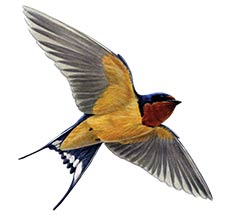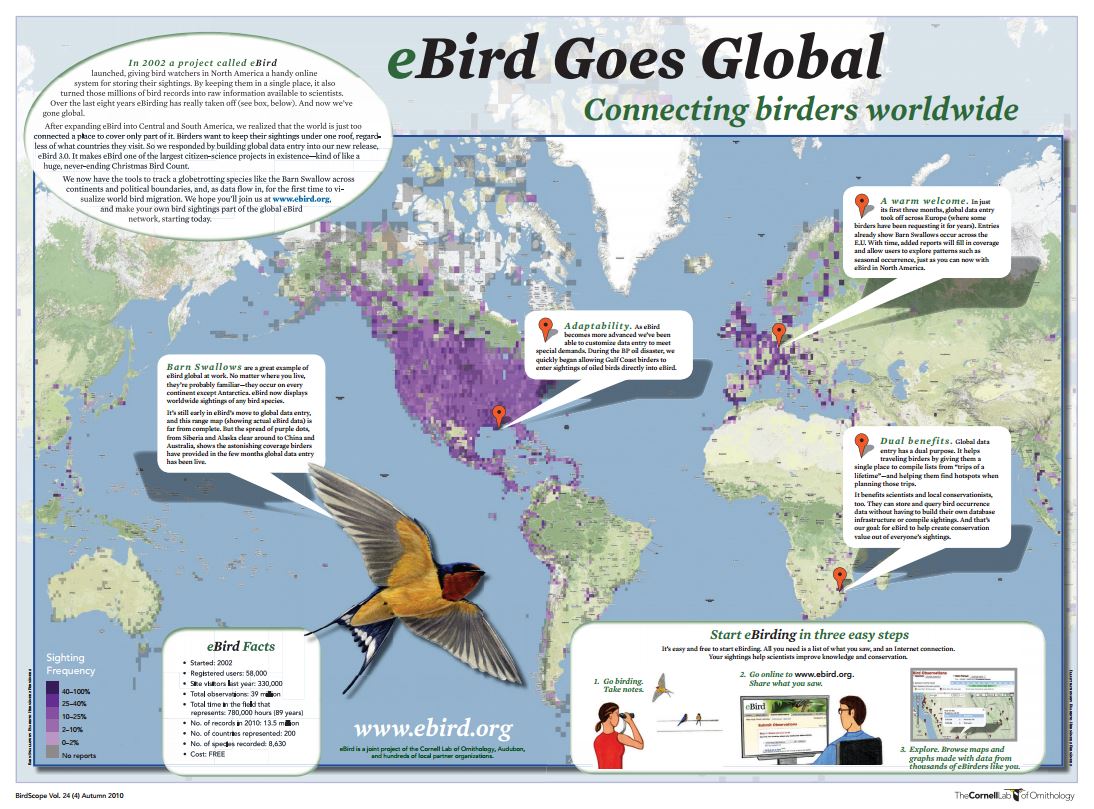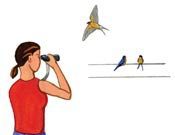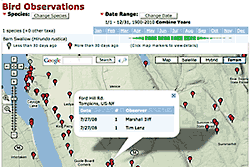eBird Goes Global
October 15, 2010Connecting birders worldwide
In 2002 a project called eBird launched, giving bird watchers in North America a handy online system for storing their sightings. By keeping them in a single place, it also turned those millions of bird records into raw information available to scientists. Over the last eight years eBirding has really taken off (see eBirdFacts, below). And now we’ve gone global.
After expanding eBird into Central and South America, we realized that the world is just too connected a place to cover only part of it. Birders want to keep their sightings under one roof, regardless of what countries they visit. So we responded by building global data entry into our new release, eBird 3.0. It makes eBird one of the largest citizen-science projects in existence—kind of like a huge, never-ending Christmas Bird Count.

We now have the tools to track a globetrotting species like the Barn Swallow across continents and political boundaries, and, as data flow in, for the first time to visualize world bird migration. We hope you’ll join us at Start eBirding at right).
Barn Swallows are a great example of eBird global at work. No matter where you live, they’re probably familiar—they occur on every continent except Antarctica. eBird now displays worldwide sightings of any bird species.
It’s still early in eBird’s move to global data entry, and this range map (showing actual eBird data) is far from complete. But the spread of purple dots, from Siberia and Alaska clear around to China and Australia, shows the astonishing coverage birders have provided in the few months global data entry has been live.
A warm welcome. In just its first three months, global data entry took off across Europe (where some birders have been requesting it for years). Entries already show Barn Swallows occur across the E.U. With time, added reports will fill in coverage and allow users to explore patterns such as seasonal occurrence, just as you can now with eBird in North America.
Dual benefits. Global data entry has a dual purpose. It helps traveling birders by giving them a single place to compile lists from “trips of a lifetime”—and helping them find hotspots when planning those trips.
It benefits scientists and local conservationists, too. They can store and query bird occurrence data without having to build their own database infrastructure or compile sightings. And that’s our goal: for eBird to help create conservation value out of everyone’s sightings.
Adaptability. As eBird becomes more advanced we’ve been able to customize data entry to meet special demands. During the BP oil disaster, we quickly began allowing Gulf Coast birders to enter sightings of oiled birds directly into eBird.
eBird Facts
- Started: 2002
- Registered users: 58,000
- Site visitors last year: 330,000
- Total observations: 39 million
- Total time in the field that represents: 780,000 hours (89 years)
- No. of records in 2010: 13.5 million
- No. of countries represented: 200
- No. of species recorded: 8,630
- Cost: FREE
Originally published in the Autumn 2010 issue of BirdScope.

All About Birds
is a free resource
Available for everyone,
funded by donors like you
American Kestrel by Blair Dudeck / Macaulay Library




